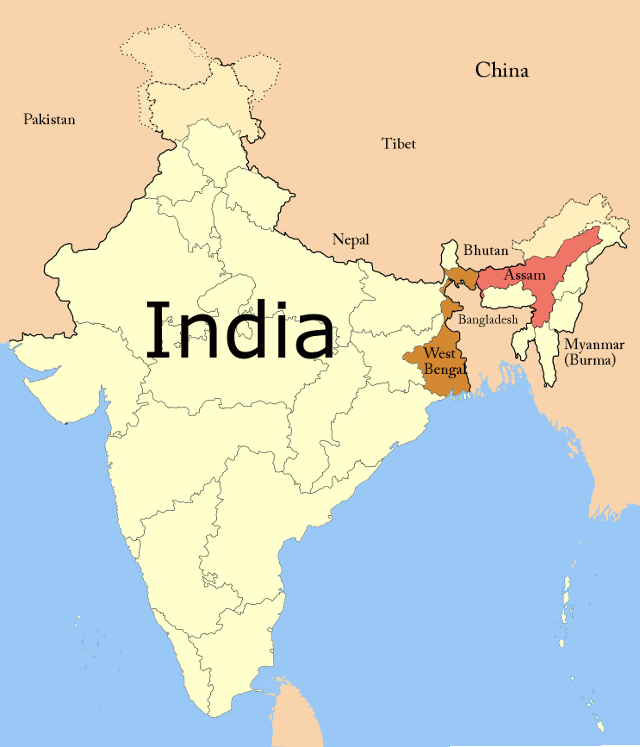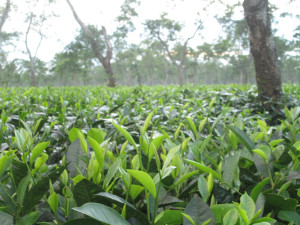As winter seems to keep coming earlier than I want, I went into the kitchen looking for something warm, soothing, and filling. Nothing fits that bill like risotto. Now, I will admit I am usually looking for ways to make the everyday recipes my own and that is why I thought to replace the traditional stock in this dish with tea.
In figuring out which tea to use, it is helpful to remember that risotto gets its creaminess from both the butter added at the end of cooking and the starch released from the rice during cooking. So whatever tea is chosen needs to hold up against dairy and nothing does that better than a good strong black tea. I am sure an Assam black tea or Yunnan would have done fine, but I opted for one of our favorites, Kosabei TGFOP, a black tea from Kenya with both a malty flavor and slightly floral notes.
Black Tea Risotto
- 4-6 tablespoons room temperature butter*
- 6½ cups water
- 1½ tsps of Kosabei TGFOP (Yunnan Sunrise, Classic Assam, or other bold black tea would work too)
- 1 medium onion
- 1½ cups Arborio rice or another short grained rice
- 1 cup shredded Parmesan cheese
*You can use oil, just use a lighter oil like corn or safflower, olive oil will overpower the tea flavor
First you will need to brew up your tea. Using a small stock pot or sauce pan, bring 6 ½ cups of water to a boil. Once it reaches a boil take the pot off the burner and then drop in all the tea. Allow the leaves to steep for 5 minutes and then pour everything through a strainer into a pitcher. Wipe any residual leaves out of the pot and then return the liquid to the pot. Put it over low heat so it stays warm while you are cooking the risotto. The best way to guarantee success with risotto is having warm liquid to pour over the rice.
Dice the onion into small pieces. Put a medium to large sauce pan (2 quarter sauce pan will give you more room to stir) on the stove at high heat. Put in 2 tablespoons of the butter and allow to melt. Add the onion to the butter and allow to cook for 3 to 5 minutes (the onions should look translucent). Stir periodically so your onions don’t brown. Then add the rice to the pan and cook for another 3-5 minutes. Stir occasionally to get the butter over all the rice and to evenly incorporate the onion. If using Arborio rice, when the kernels become clear around the edges it is the signal to start adding the tea.
Using a ladle, scope in one ladle of the tea and then stir until the liquid disappears. Then add the next ladle and repeat. Keeping going until you have roughly ½ cup left of the tea. Your rice should look plump and by in a slightly creamy sauce (it should not look soupy and the rice kernels should be apparent). Now add in the remaining butter 1 tablespoon at a time. If you cut the tablespoon into quarters it will melt faster. Also, this is where it is time to take a small taste of the risotto and see if you like the creaminess. It is not necessary to add all four tablespoons, it is more of a personal preference. Next, stir in the cup of cheese until it is fully incorporated.
Now is the time to judge if the remaining ½ cup of tea is necessary. If the risotto is looking dry, try adding a little at a time until it looks shiny. You can also skip the last half cup and save it for the morning if you like the taste of the risotto and how it looks. Salt and pepper to taste and if you want you can stir in ½ to ¾ cup of your favorite vegetable and a couple teaspoons of herbs (rosemary and green peas is one of my favorite combinations in this dish).
I was surprised at how the warm malty flavor of a good black tea adds unique note to this creamy dish. Not to mention, it turns it a warm wheat brown color almost like a loaf of bread. I hope this inspires you to try using tea in one of your favorite recipes.








